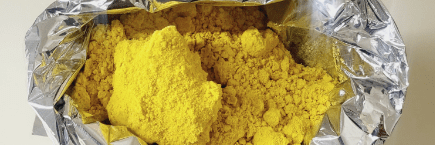What are opioids?
Opioids are a class of drugs that relieve pain. They are typically used to treat moderate to severe pain. Opioids bind to opioid receptors in the brain and spinal cord, which block the transmission of pain signals.
What are the different types of opioids?
There are many different types of opioids, including:
- Natural opioids: These are opioids that occur naturally in the body, such as endorphins and enkephalins.
- Semi-synthetic opioids: These are opioids that are made from natural opioids, such as morphine and heroin.
- Synthetic opioids: These are opioids that are made in a laboratory, such as fentanyl and oxycodone.
How are opioids used?
Opioids are typically taken orally, but they can also be injected, snorted, or smoked. The dose of an opioid will vary depending on the individual’s needs and the severity of their pain.
What are the risks of using opioids?
Opioids can have a number of side effects, including:
- Respiratory depression: Opioids can slow down breathing, which can be fatal if not treated.
- Constipation: Opioids can slow down the digestive system, which can lead to constipation.
- Nausea and vomiting: Opioids can cause nausea and vomiting.
- Itching: Opioids can cause itching.
- Sedation: Opioids can cause drowsiness and sedation.
- Addiction: Opioids can be addictive.
How can I avoid the risks of using opioids?
There are a number of things you can do to avoid the risks of using opioids, including:
- Take opioids only as prescribed by your doctor.
- Do not take opioids with alcohol or other sedatives.
- Do not use opioids if you have sleep apnea or other breathing problems.
- Do not use opioids if you have a history of addiction.
- Tell your doctor if you have any side effects from opioids.
If you are concerned about the risks of using opioids, talk to your doctor.## [Opioids/narcotics/pain relievers]
Executive Summary
Opioids are a class of drugs that are primarily used to treat moderate to severe pain. They are powerful painkillers that work by binding to opioid receptors in the brain and spinal cord. Opioids can be highly effective in relieving pain, but they also have the potential for abuse and addiction.
Introduction
Opioids are a controversial class of drugs that have been used for centuries to relieve pain. In recent years, there has been a dramatic increase in the use of opioids, leading to a public health crisis. Opioids are now the leading cause of overdose deaths in the United States.
FAQ
- What are opioids?
- What are the risks of using opioids?
- How can I get help if I am addicted to opioids?
Top 5 Subtopics
1. Types of Opioids
- Natural opioids: These are opioids that are found in nature, such as morphine and codeine.
- Semi-synthetic opioids: These are opioids that are made from natural opioids, such as oxycodone and hydrocodone.
- Synthetic opioids: These are opioids that are made in a laboratory, such as fentanyl and carfentanil.
2. Risks of Using Opioids
- Addiction: Opioids are highly addictive. People who take opioids for a long period of time can become dependent on them and experience withdrawal symptoms if they stop taking them.
- Overdose: Opioids can cause overdose, which can lead to death. The risk of overdose is higher with synthetic opioids than with natural opioids.
- Other risks: Opioids can also cause a number of other side effects, such as constipation, nausea, vomiting, and respiratory depression.
Where Can I Safely Purchase 1p-LSD to Enjoy Its Psychedelic Effects?
3. How to Get Help for Opioid Addiction
- Talk to your doctor: If you are concerned about your opioid use, talk to your doctor. They can help you develop a plan to reduce your opioid use or get treatment for opioid addiction.
- Get support from a therapist: A therapist can help you understand the underlying causes of your opioid addiction and develop coping mechanisms for dealing with cravings.
- Join a support group: Support groups can provide you with a safe and supportive environment where you can connect with other people who are struggling with opioid addiction.
4. Treatment for Opioid Addiction
- Medication: There are a number of medications that can be used to treat opioid addiction, such as methadone, buprenorphine, and naltrexone.
- Behavioral therapy: Behavioral therapy can help you change the thoughts and behaviors that contribute to your opioid addiction.
- Support groups: Support groups can provide you with a safe and supportive environment where you can connect with other people who are struggling with opioid addiction.
5. Harm Reduction
- Naloxone: Naloxone is a medication that can reverse the effects of an opioid overdose. It is available without a prescription in most states.
- Safe injection sites: Safe injection sites provide a safe and supervised environment where people can inject drugs. This can help to reduce the risk of overdose and other harms associated with drug use.
- Education: Educating people about the risks of opioid use can help to prevent opioid addiction.
Conclusion
Opioids are a powerful class of drugs that can be effective in relieving pain. However, they also have the potential for abuse and addiction. It is important to be aware of the risks of opioid use and to take steps to prevent addiction. If you are struggling with opioid addiction, there is help available. Talk to your doctor, get support from a therapist, and join a support group.
Keyword Tags
- opioids
- narcotics
- pain relievers
- addiction
- overdose

